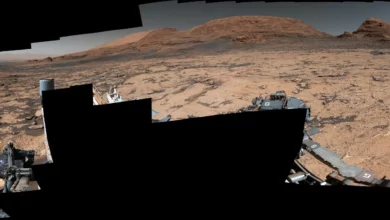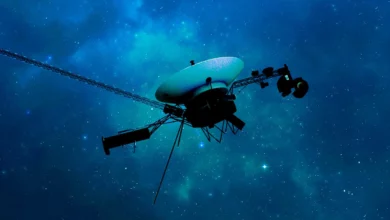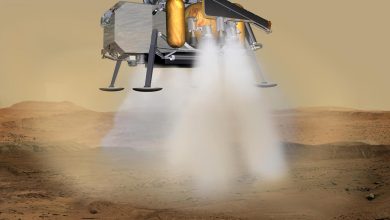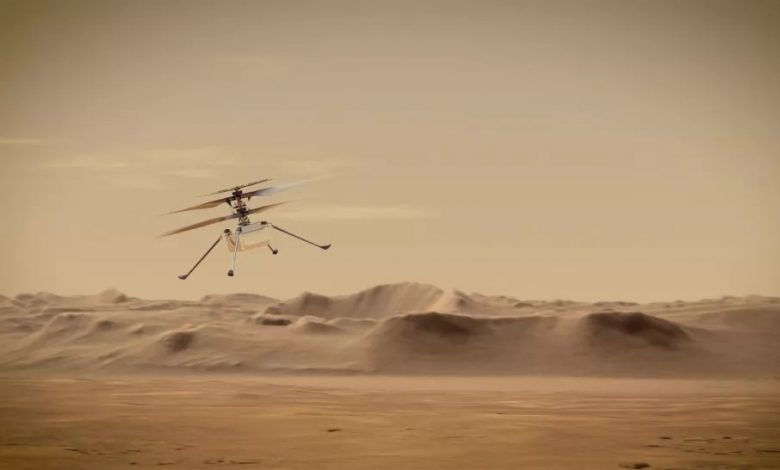
Back on 18th Feb, the Mars Perseverance Rover made a crazy but deadly landing on the red planet. They finally succeeded in landing the rover including the ingenuity helicopter.
Now, we may be just over two weeks away from the first powered flight by an aircraft on an alien world.
Ingenuity helicopter’s first flight on the red planet
NASA’s 4-lb. (1.8 kilograms) Mars Helicopter Ingenuity, which landed on the Red Planet with the Perseverance rover on Feb. 18, could make its first flight as early as April 8, agency officials announced today (March 23).
That pioneering liftoff will be the first of five that the technology-demonstrating Ingenuity makes during its 31-day flight window on Mars, if all goes according to plan.
If successful, it would represent something of a “Wright Brothers moment”, says Nasa.
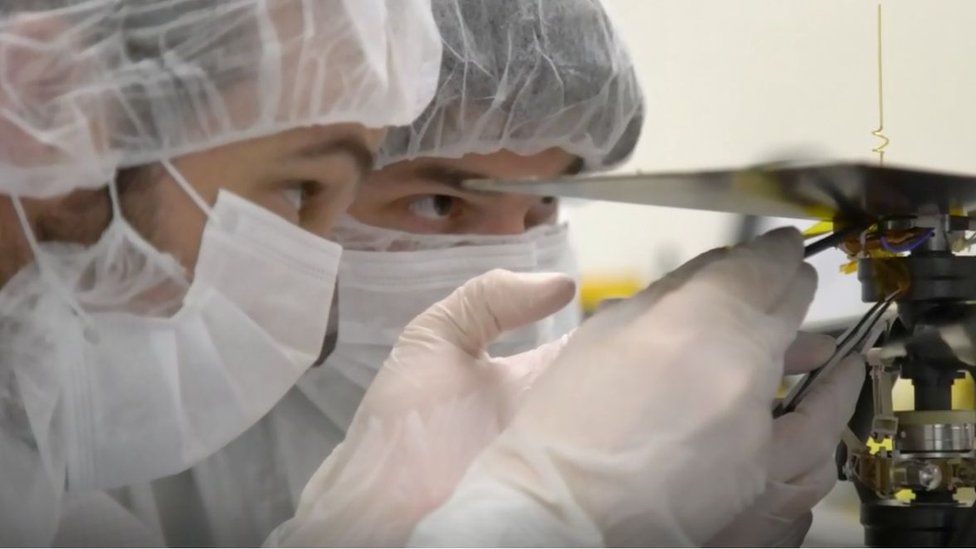
This is a reference of course to Orville and Wilbur Wright, who in 1903 conducted the historic first heavier-than-air, powered aircraft flight here on Earth.
And to mark the connection, the agency revealed that a postage stamp-sized piece of fabric from a wing of the brothers’ plane has been taped to Ingenuity.
“We’re looking forward to seeing how our little helicopter does on the surface of Mars, and we know people around the world are eager to join us for that exciting 31-day demonstration,” Lori Glaze, the director of NASA’s Planetary Science Division, said during a news conference today.
There are still a number of boxes to tick before Ingenuity is ready to get off the ground, however. For example, Ingenuity is still attached to Perseverance’s belly, and deploying the little chopper onto the red dirt is a complicated process that will unspool over the course of six days.
“As with everything with the helicopter, this type of deployment has never been done before,” Farah Alibay of NASA’s Jet Propulsion Laboratory (JPL) in Southern California, the Mars Helicopter integration lead for Perseverance, said in a statement.
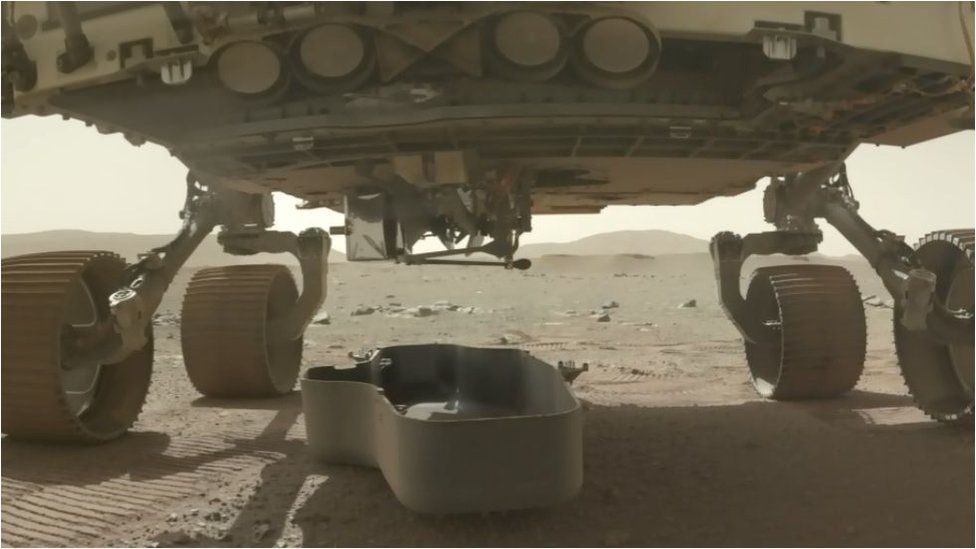
“Once we start the deployment, there is no turning back,” Alibay added. “All activities are closely coordinated, irreversible, and dependent on each other. If there is even a hint that something isn’t going as expected, we may decide to hold off for a sol or more until we have a better idea what is going on.” (A sol is a Martian day, which is about 24 hours and 40 minutes long.)
The deployment will begin after Perseverance gets itself to the center of Ingenuity’s airfield, a flat and relatively hazard-free square of terrain 33 feet (10 meters) on a side that’s close to the rover’s landing site on the floor on Jezero Crater.
How the rover will fly on Mars
After deploying Ingenuity, Perseverance must drive about 16.5 feet (5 m) away within 24 hours, to ensure that the solar-powered helicopter gets enough sunlight to recharge its batteries. The Ingenuity team will then begin commissioning the chopper. For example, they’ll give the four-bladed helicopter’s rotor system a test run, spinning it up to 2,537 revolutions per minute — the same rotational velocity it’ll reach during flight.
If everything checks out, Ingenuity will then gear up for its giant leap for robotkind. During that pioneering first flight, the chopper will rise to an altitude of 10 feet (3 m), hover for a maximum of 30 seconds and then come back for a landing on its four springy legs, if all goes according to plan.
The remaining flights during Ingenuity’s 31-day window will target a maximum altitude of 16.5 feet (5 m), said Ingenuity chief pilot Håvard Grip, also of JPL. During the first three sorties, the team will aim to demonstrate basic hovering capabilities, with each flight ideally going farther than its predecessor down the designated 300-foot-long (90 m) range, he added. (The airfield is a liftoff-and-landing zone at one end of this range.)
“If we get past those, we will assess — did we meet all our objectives during those flights? Do we want to go back and retry some of those things?” Grip said during today’s news conference. “Or, if everything goes really well, then we might try to stretch our capabilities beyond those basic capabilities.”
Ingenuity will take photos and video with its two onboard cameras, but it will not gather any other data; the little craft carries no scientific instruments.
Perseverance will attempt to document these flights, using its powerful Mastcam-Z camera system and two onboard microphones. The rover will do so from a spot about 200 feet (60 m) from the airfield, a location named Van Zyl Overlook in honor of key Ingenuity team member Jakob van Zyl, the former director for solar system exploration and associate director for project formulation and strategy at JPL, who died in August 2020.
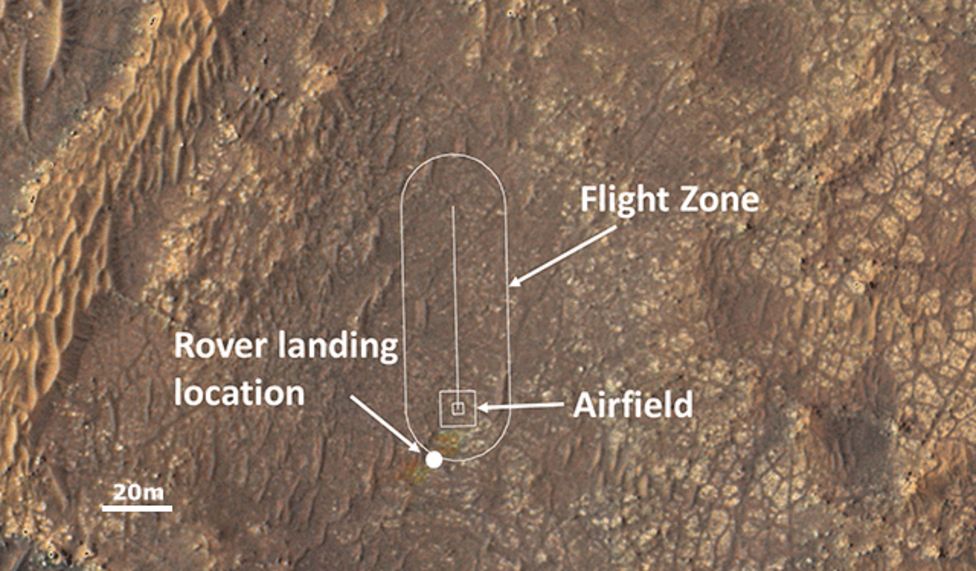
There’s no guarantee that Ingenuity will be successful. The roughly $85 million helicopter is a tech demo, after all, and Mars’ thin atmosphere — it’s just 1% as dense as that of Earth at sea level — makes powered flight on the Red Planet a challenging endeavor. But if Ingenuity does get aloft, alien skies could soon open to exploration in a big way, NASA officials said. Mars missions could routinely include helicopters, which could serve as scouts for rovers or gather data on their own.
“I can only imagine where we may be a decade or so from now,” Bobby Braun, director for planetary science at JPL, said during today’s news conference. “If we can scout and scientifically survey Mars from the air, with its thin atmosphere, we can certainly do the same at a number of other destinations across the solar system, like [Saturn’s largest moon] Titan or Venus.”
And aerial Titan exploration will happen soon, if all goes according to plan: NASA’s Dragonfly mission, which is scheduled to launch in 2027, will send a rotorcraft to explore the big moon.
To help celebrate Ingenuity’s pioneering mission and its great potential, the mission team affixed a tiny swatch of fabric from the Wright brothers’ plane, Flyer 1, which opened the era of powered flight here on Earth in 1903, agency officials announced today.
Ingenuity’s 31-day flight window is a hard cap. After that stretch, Perseverance needs to focus on its own mission, the main goals of which are hunting for signs of ancient Mars life and collecting dozens of samples for future return to Earth. That pristine Red Planet material will be hauled here by a joint NASA-European Space Agency campaign, perhaps as early as 2031.
But Perseverance carries another tech demo as well — an instrument called MOXIE (Mars Oxygen In-Situ Resource Utilization Experiment), which is designed to generate oxygen from the carbon dioxide-dominated Martian atmosphere.

